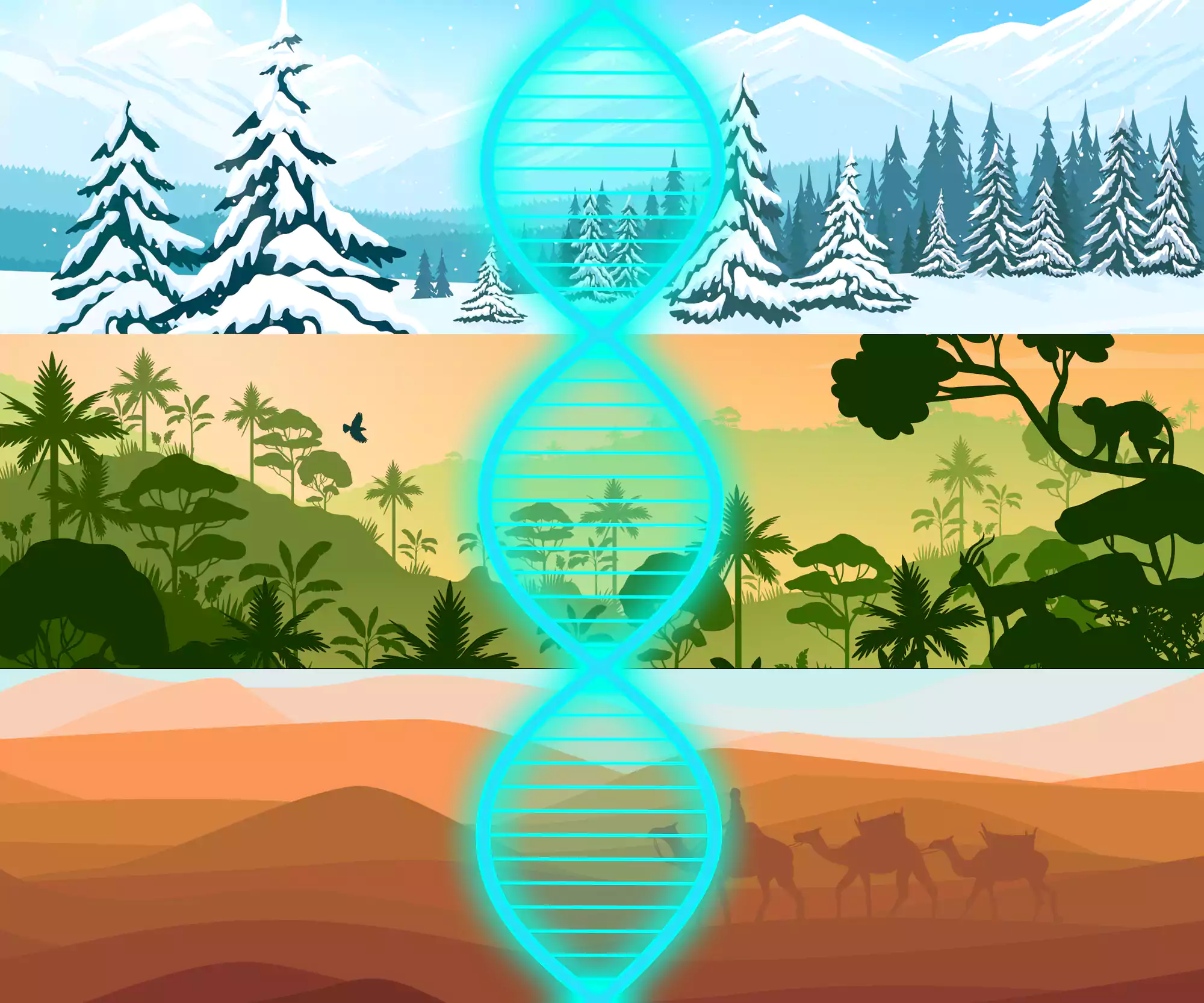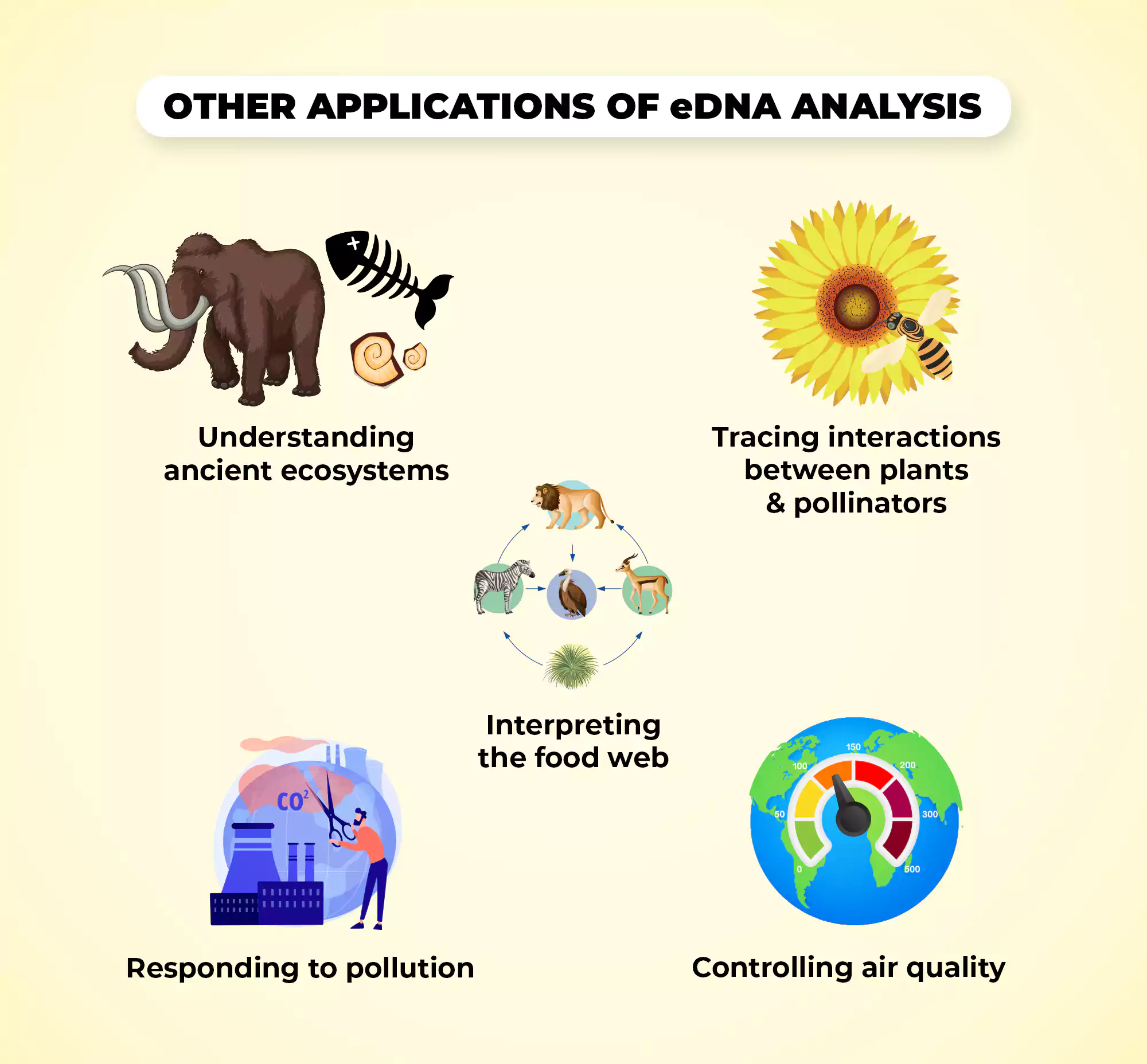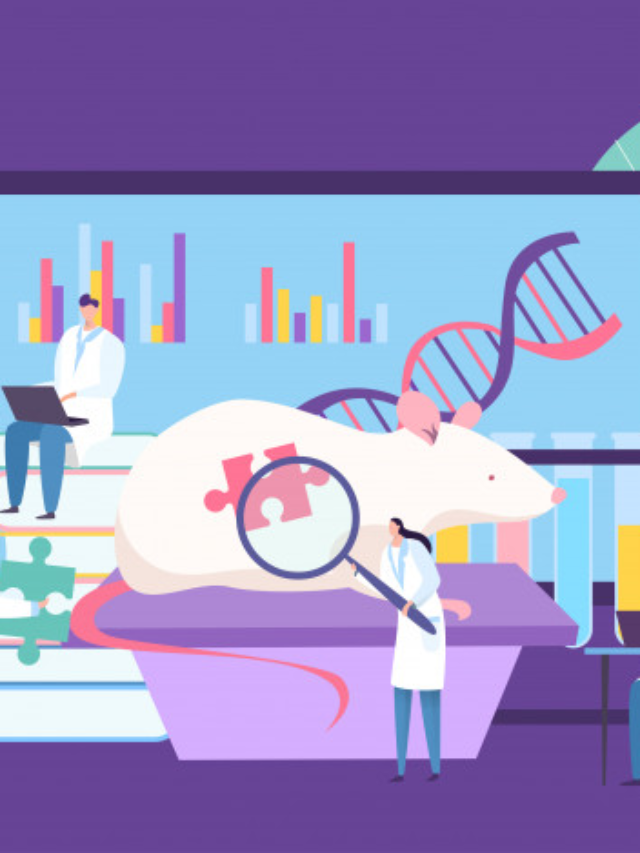
Take a moment to appreciate your form in the mirror right now. Notice your eye colour, hair colour, nose structure, and height. Do they resemble a family member, or are they a unique version of themselves? This analysis will probably lead you to wonder how you came to inherit or develop all these features. Very simply, the answer is DNA. All living organisms are biologically programmed beings with hereditary codes in their systems. DNA (deoxyribonucleic acid) is the material that contains these codes. Environmental DNA, or eDNA, on the other hand, is DNA released into the environment by organisms through faeces, shed hair, discarded dead skin tissues, and carcasses. Nowadays, scientists are increasingly recognising the importance of environmental DNA. Here’s why.
How to study eDNA
Water, soil, snow, and air contain samples of eDNA. While terrestrial eDNA remains in the surroundings for a substantial amount of time, aquatic eDNA stays for only about three weeks as hydrological processes and ocean currents dilute and distribute them. Essentially, wherever animals deposit their excreta or shed their hair or skin, scientists can pick up an eDNA sample from such spots.
It is possible to study eDNA through analysis followed by sequencing, where the building blocks of the DNA reveal unique information about the species. Two approaches are typically adopted to amplify the environmental sample:
- The single-species method employs specific markers to identify a species. This method enables researchers to determine whether a species is endemic to a particular region or an invasive organism based on a comparative analysis of the eDNA available from other native species in the area.
- The multiple-species technique uses generalised parameters for studying the sample. Using this method allows taxonomists to understand species diversity within a population and even between populations living in the same area.
The purpose of studying eDNA
The applications of environmental DNA methodologies and protocols revolve around two primary purposes:
(a) Detecting native species
In the case of native species, eDNA offers a cost-effective and speedy way to collect data about many things. For example, it opens a window into species variation, distribution, density, and abundance. One reason for its efficiency is that eDNA does not require a large sample size to confirm the presence of an organism in an ecosystem.
(b) Detecting invasive species
The application of eDNA technologies also proves tremendously valuable for detecting invasive species. These organisms, also known as alien or exotic species, disrupt or modify the processes of the ecosystems they invade through adaptation and reproduction. As a result, they can cause long-term harm to indigenous species and may even change the ecosystem entirely.
Human activities have been responsible for the accidental introduction of such organisms in native ecosystems. For example, zebra mussels, native to the Black Sea and the Caspian Sea, entered the Great Lakes of North America by getting attached to ships and vessels traversing the two regions. Catching hold of such organisms before they arrive in an ecosystem is challenging. Unfortunately, their presence is only noticeable after they have caused a certain level of disruption.
eDNA: the gatekeeper of the natural habitat
eDNA provides the tools necessary to detect the invasion of non-native species before they can even enter an ecosystem. How is this possible? With eDNA, scientists already have a sample bank of organisms native to a particular area. Similarly, eDNA has given scientists data collected on exotic species from various global locations. As a result, detecting the presence or the possible entry of invasive species has become possible thanks to eDNA. This technology can also help create protected habitats to monitor the movements of threatened species. Furthermore, eDNA can provide insight into their adaptation behaviour in response to climate change.

Recent real-world applications
Scientists and taxonomists currently favour multiple-species eDNA analysis, as it allows the detection and monitoring of entire populations and sub-populations. This detection and tracking are possible through mass sequencing of eDNA to simultaneously identify different species and groups. The technology that enables such an exploration of eDNA is Next-Generation Sequencing (NGS). NGS powers a process called ‘DNA metabarcoding’ to make sense of all the varying genetic materials collected in a sample. The cherry on top is that such a study is both holistic and minimal in cost.
Given the wide-ranging promises shown by eDNA technologies in biodiversity conservation, several wildlife organisations are employing these technologies to understand floral and faunal populations better. For example, the World Wide Fund for Nature (WWF) used eDNA applications to confirm the existence of highly endangered species in the Mekong River, such as the Irrawaddy dolphin. The WWF also collects and analyses eDNA samples from polar bear tracks to catalogue their sub-populations.
The challenges
Conserving the environment and its resources is a top priority for countries worldwide. Environmental DNA technologies offer an entirely scientific solution for elevating conservation efforts. However, despite its promises, the technology suffers many challenges. For example, eDNA samples are tedious to detect and analyse. They are usually dispersed, diluted, or entirely eliminated by weather agents, such as rainfall, and anthropogenic factors, such as pollution. Furthermore, the DNA barcoding technique still needs to develop ways to meaningfully use the obtained sequences due to factors such as genetic variations between species.
What’s the next step?
Given its worldwide, species-wide applications, eDNA deserves administrative support from its respective regions. Investments in research and development should bear this in mind. In addition, close collaborations between governments, international organisations, academia, and the industry need to happen. Furthermore, stringent implementation of international protocols to prevent illegal trade and transport of genetic resources will be imperative to back the advancements in eDNA technologies.



